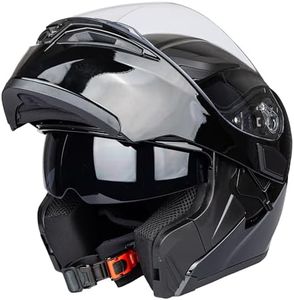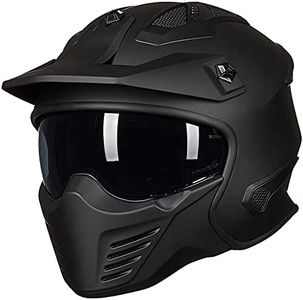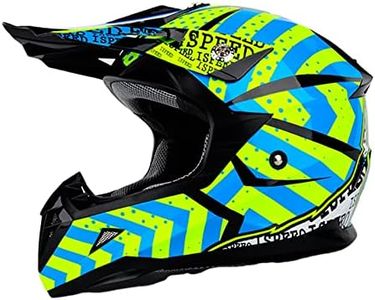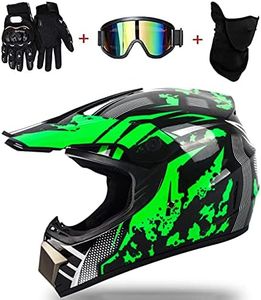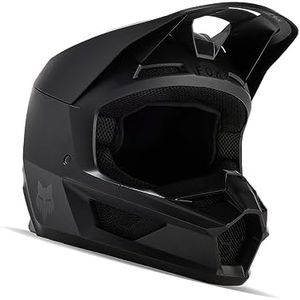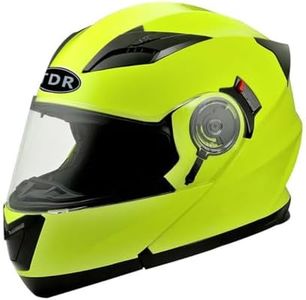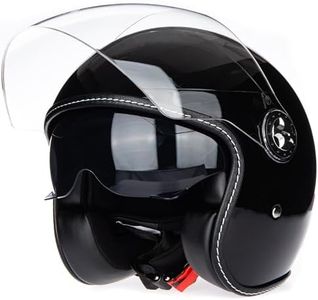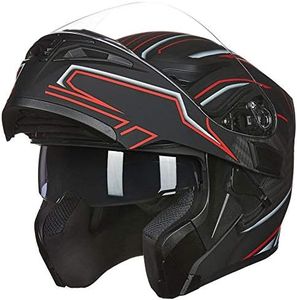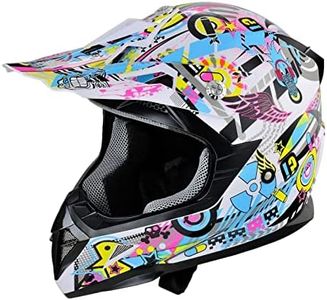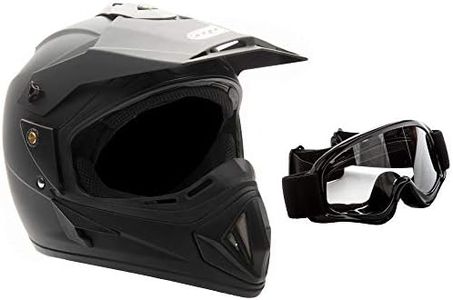We Use CookiesWe use cookies to enhance the security, performance,
functionality and for analytical and promotional activities. By continuing to browse this site you
are agreeing to our privacy policy
10 Best Atv Helmet
From leading brands and best sellers available on the web.Buying Guide for the Best Atv Helmet
Choosing the right ATV helmet is crucial for your safety and comfort while riding. Helmets are designed not only to protect your head from impacts but also to provide ventilation, comfort, and a good field of vision. Before you buy, think about where and how you’ll be riding, local safety regulations, and personal comfort preferences. Trying on helmets before purchasing, whenever possible, ensures you get the best fit for your head shape.CertificationCertification refers to safety standards met by the helmet, such as DOT, ECE, or Snell. This is important because it proves the helmet has undergone rigorous testing and meets minimum safety requirements. Generally, DOT is the basic certification in the United States, ECE is a popular European standard, and Snell is known for more stringent testing. Consider your riding location: If you're in a region with legal requirements, make sure the helmet meets the relevant standard. For maximum protection, look for the most stringent certification available.
Helmet TypeHelmet type determines the coverage and style of the helmet. For ATV riding, common types include full-face, modular, and open-face helmets. Full-face helmets offer the most protection, covering the whole head, including the chin and jaw. Modular helmets have a chin bar that lifts up, blending convenience with good protection. Open-face helmets are lighter and provide better airflow but less protection for the face. If you ride aggressively or on challenging terrain, a full-face helmet is best. For casual or leisurely rides, you might prefer an open-face or modular helmet.
Fit and ComfortFit and comfort mean how snugly the helmet sits on your head and how comfortable it feels over time. This is crucial because a poorly fitting helmet can reduce protection and even distract you while riding. Sizes usually range from XS to XXL and can vary by brand, so always check sizing charts and, if possible, try the helmet on. A helmet should fit tight enough not to move around but not so tight it causes discomfort or headaches. Consider your head shape—some helmets are more oval, others round. Spending extra time ensuring the right fit will make your rides safer and more enjoyable.
VentilationVentilation refers to the system of air vents in the helmet that allow airflow, keeping you cool and reducing sweat. Proper ventilation is important for longer rides or hot weather. Helmets can range from very basic venting to advanced systems with multiple adjustable vents. If you tend to ride in warmer climates or do intensive off-roading, look for a helmet with excellent ventilation. For shorter, slower, or colder rides, less ventilation may be sufficient.
WeightThe weight of a helmet affects comfort, especially on longer rides. Lighter helmets reduce neck fatigue but must still be sturdy for protection. Most helmets are made from materials like polycarbonate, fiberglass, or carbon fiber, each affecting the overall weight. Lighter materials are typically more comfortable but can be more expensive. Choose a helmet weight that you can wear comfortably for the duration of your rides.
Visibility and Face ShieldVisibility is determined by the size and design of the eye port and the quality of the face shield. A wide field of view helps you spot hazards while riding. The face shield should protect you from debris, wind, and UV rays, and may be clear or tinted. If you ride in dusty or muddy areas, opt for anti-fog and scratch-resistant shields, possibly a helmet that accommodates goggles. Assess where and when you’ll ride most to choose the right combination of visibility and protection.
Liner and PaddingThe liner and padding inside the helmet provide comfort and assist in absorbing shocks. Quality padding reduces pressure points and can make the helmet more pleasant to wear for long periods. Removable, washable liners are ideal for easy cleaning. If you value comfort, look for soft, moisture-wicking liners, especially for extended or frequent use.
